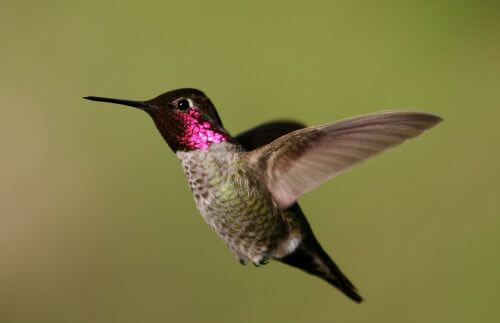Tunisian start-up company has developed a revolutionary wind turbine technology inspired by the flapping of the Scout's wings / by: Dafna Haim-Langford

Any change, even a small one, in the efficiency of wind turbine technology, constitutes a change of energetic significance in areas that are based on this energy as an energy source.
in the innovative wind turbine developed by the Tunisian company Tyer wind, biomimetic principles were used to mechanically imitate the flapping of the bird's wings. The design is very different from the standard wind turbines, since instead of converting linear energy (the energy from the movement of the wind) into circular energy, the new turbine converts the linear energy into movement in the figure eight configuration - similar to the movement of a bird's wing in a state of hovering. In this way, the generation of energy comes from both the upward movement and the downward movement.
As already We have told before, scout aviation is considered energy efficient and has great potential for applications in this field, and therefore attracts a lot of interest among aviation researchers. in the company Tyer wind, for the first time, are trying to imitate the movement of the bird's wings not for energetically efficient flight but for the purpose of producing energy in a more efficient way.
These days, an efficiency test of the wind turbine model was conducted Tyer wind In the expanses of the savannah of Tunisia when the model has two wings, each wing in length 1.6 meter, and in strong wind conditions the model performs about 450 movements per minute. The company's engineers hope for a quieter, bird-friendly, smaller and more energy-efficient system.
The system is still in the initial stages of development, so there are no results yet regarding its energy efficiency. But the company believes that the new principles are a breakthrough in the field of energy production, and the design principles could be used in the future to produce wind turbines of different dimensions for different needs, as well as to produce more efficient industrial engines for different needs.

4 תגובות
Tovia, you don't understand basic physics. In piston engines, there is a conversion of energy from kinetic to potential, so there is no waste of energy (except for friction). In Vankel engines the problem is different and not related to movement losses. I was involved in the development of the Wankel engine and there the problem is different. There is a huge friction problem in the ribs, also the combustion chamber is not efficient, so the efficiency of the engine is very low and is not related to rotation but to other problems. It's a fact that until today, except for NSU (RO80) and Mazda, which plays with it, but not in a commercial way. No serious woman messes with this engine. There are many studies on the subject of wind turbines. In fact, the combination of wind turbines with solar panels is the future alternative for energy.
On the face of it, it seems that there is a waste of energy, at the end of each move. And I actually rely on an internal combustion engine.
For example: when the piston is in a working stroke it "flies" downwards at a crazy rate, but when it reaches the end of the stroke (bottom dead center), it actually stops completely!!! And you have to start from zero the upward climb. Then once again you come to a complete stop at top dead center and then you have to start the downward descent again.
In Wankel engines, in which the piston movement is rotary and there are no stops along the way, the energy efficiency is significantly greater. (Today, as far as I know, only Mazda produces Wankel engines in serial production).
On the face of it, it seems that a turbine with a rotary movement without stopping at the end of each operation will give a higher energy efficiency.
And all this in addition to what the skeptic wrote about mechanical strengths of stopping and restarting movement.
But....only time will tell. In the meantime, the company must have received excellent publicity.
An interesting and original idea, the question is whether it can be applied in large systems, it is possible that what will bring it down will be a problem in scaling it up to very large sizes like in normal wind stations, even in the size they apparently show there are not simple nominal loads, in nature it is "applied" to small creatures insects and birds small
It seems that the loads of changing the direction of the wings in a large system will be very large and will cause serious failures of the system over time,
The airplanes and the wind stations took certain euro-dynamos principles that already exist in nature and utilized them
When they tried to make a sweeping imitation of the movement of a bird at the beginning of the development of aviation, they always failed,
Here there is a more sweeping attempt to imitate a system that is small in nature and probably not for nothing,
So if nature is some kind of indication then the possible application of this is more indicative of small systems
It is interesting how far the system developers will be able to promote their system.
"The engineers at the company hope for a quieter system... and more energy efficient... The system is still in the initial stages of development, there are no results yet regarding its energy efficiency. But in society they believe...